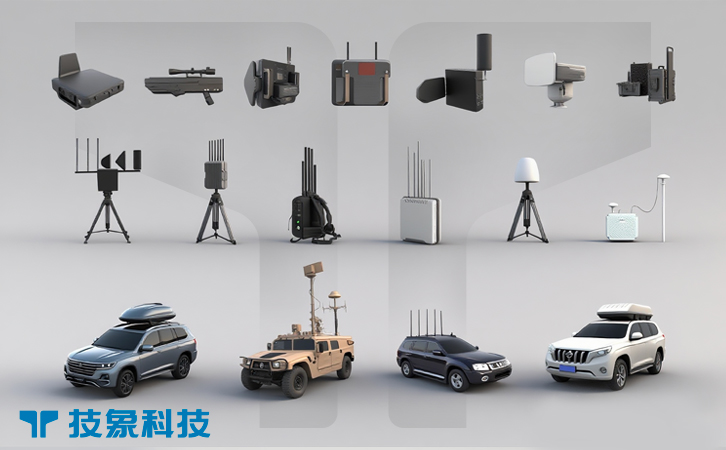The rapid rise of unmanned aerial vehicles (UAVs) has introduced significant security challenges, with rogue drones used for smuggling, espionage, and disruptions threatening airports, stadiums, and military sites. In 2025, with over 6 million commercial drones globally, counter-drone systems (C-UAS) are critical to neutralize these threats. Among the diverse countermeasures, kinetic capture methods—particularly netting systems—stand out for their ability to physically intercept drones without relying on destructive force, minimizing collateral damage in populated or sensitive areas. From net-carrying drones to ground-based launchers, these solutions offer precision and reusability. This article explores the growing need for kinetic capture, the mechanics of netting systems, their real-world applications, and the challenges and innovations shaping their future, highlighting their role in modern counter-drone warfare.
I. The Need for Kinetic Capture in Counter-Drone Defense
Rogue drones pose diverse threats, from delivering contraband to prisons to conducting unauthorized surveillance over crowded events, necessitating effective and safe neutralization methods. In 2025, incidents like drone incursions at U.S. airports—over 400 reported in the first quarter—underscore the urgency of countermeasures that avoid the risks of explosive or high-energy solutions like missiles or lasers. Kinetic capture, particularly netting, addresses this by physically ensnaring drones, ensuring they are neutralized without debris that could harm bystanders or infrastructure.
Traditional methods like jamming can fail against autonomous drones that don’t rely on radio signals, while missiles, costing up to $2 million per shot, are uneconomical against cheap UAVs priced as low as $1,000. Netting systems offer a cost-effective alternative, with per-use costs under $500, and are ideal for urban settings or sensitive sites like nuclear facilities, where safety is paramount. The 2019 Gatwick Airport disruption, caused by rogue drones, highlighted the need for non-destructive solutions to prevent operational chaos. Kinetic capture also supports evidence collection, as captured drones can be analyzed to trace operators, a critical advantage in countering smuggling or espionage. As drone threats evolve, netting systems provide a practical, safe response, filling a gap where electronic countermeasures fall short.
II. Mechanics of Netting Systems for Drone Capture
Kinetic netting systems operate by deploying nets to entangle a drone’s propellers or airframe, causing it to lose lift and either fall safely or be retrieved. These systems come in two primary forms: ground-based launchers and aerial interceptors. Ground-based systems, like SkyWall’s SkyWall100, use compressed gas or spring mechanisms to fire nets up to 100 meters, with some models incorporating parachutes to gently lower captured drones, preventing damage to the UAV or surroundings. Aerial interceptors, such as Fortem’s DroneHunter, involve net-carrying drones that pursue and capture targets mid-air, using AI to match the rogue drone’s speed and trajectory.
The nets, typically made of lightweight, high-strength materials like Kevlar or Dyneema, are designed to withstand propeller impacts and entangle drones ranging from small quadcopters to larger fixed-wing models. Advanced systems integrate sensors—radar, RF, or optical—for precise targeting, ensuring nets are deployed only when a drone is within range, typically 50-200 meters. For example, DroneHunter uses onboard AI to predict a drone’s path, achieving a 90% capture success rate in 2025 tests. Some systems, like OpenWorks’ SkyNet, incorporate GPS-guided nets for longer ranges, while others use tethered nets to reel in captured drones for analysis.
Advantages include minimal collateral risk, reusability (nets can be reloaded or retrieved), and low energy consumption compared to lasers, which require kilowatts of power. Limitations include short ranges and the need for precise targeting, as nets are ineffective against fast-moving or high-altitude drones. In 2025, advancements like biodegradable nets and automated reloading systems enhance sustainability and efficiency, making netting a versatile tool in the C-UAS arsenal.
III. Real-World Applications and Success Stories
Kinetic netting systems have seen widespread adoption in 2025, protecting diverse environments from rogue drones. At civilian venues, such as the 2025 Super Bowl, SkyWall systems were deployed to secure airspace, successfully capturing an unauthorized drone filming the event without disrupting the crowd. Prisons have embraced netting to counter smuggling, with a 2025 U.K. prison trial using DroneHunter to intercept drones delivering drugs, reducing contraband incidents by 70%. Military applications are equally significant: the U.S. Army tested net-based systems in 2025 exercises, neutralizing swarms of up to 10 drones in simulated urban combat, demonstrating scalability.
Internationally, Singapore’s Changi Airport implemented ground-based netting launchers to complement radar, thwarting multiple incursions in 2025 without flight delays. The Netherlands’ SkyNet system, used during a 2025 royal event, captured a drone carrying a camera, enabling authorities to trace the operator. These successes highlight netting’s precision and safety, particularly in crowded or sensitive areas where lasers or missiles are impractical. Integration with multi-sensor systems—radar for detection, RF for operator location—enhances effectiveness, as seen in Canada’s 2025 CUAS Sandbox, where netting systems were paired with AI analytics for real-time threat response. These deployments underscore netting’s growing role in both civilian and military C-UAS strategies.
IV. Challenges and Future Innovations
Despite their advantages, netting systems face challenges that limit their universal adoption. Range limitations—typically under 200 meters—restrict their use against high-altitude or fast-moving drones, requiring integration with long-range sensors like radar. Environmental factors, such as wind or rain, can affect net accuracy, necessitating robust designs. Costs, while lower than lasers (starting at $10,000 per system), can escalate when scaling for large areas, as multiple launchers or interceptors are needed. Operator training is also critical, as manual systems like SkyWall require skilled personnel to aim accurately under pressure.
Regulatory hurdles complicate deployment: in the U.S., FAA restrictions on airspace interventions limit private use of netting systems, requiring coordination with federal agencies. Privacy concerns arise when captured drones contain civilian data, prompting calls for transparent handling protocols in 2025 policy debates. Future innovations are addressing these issues. By 2030, AI-guided autonomous netting drones are expected to double capture ranges through predictive targeting. Biodegradable nets, tested in 2025 EU trials, reduce environmental impact, while modular systems allow rapid net reloading, cutting downtime. Integration with edge computing will enhance real-time decision-making, and global standards, proposed at the 2025 Counter UAS Technology USA Conference, aim to streamline regulations. These advancements will make netting systems more versatile and accessible, solidifying their role in counter-drone defense.
Conclusion
Kinetic netting systems are a vital component of counter-drone warfare, offering a safe, precise, and cost-effective solution to neutralize rogue UAVs in 2025’s threat-filled skies. Their ability to capture drones without destruction makes them ideal for urban and sensitive environments, as proven in real-world applications from prisons to stadiums. Despite challenges like range limitations and regulatory barriers, innovations in AI, sustainable materials, and modular designs promise to enhance their effectiveness. By investing in these technologies and aligning policies, stakeholders can ensure netting systems remain a cornerstone of C-UAS, safeguarding airspaces from evolving drone threats while prioritizing safety and sustainability.



